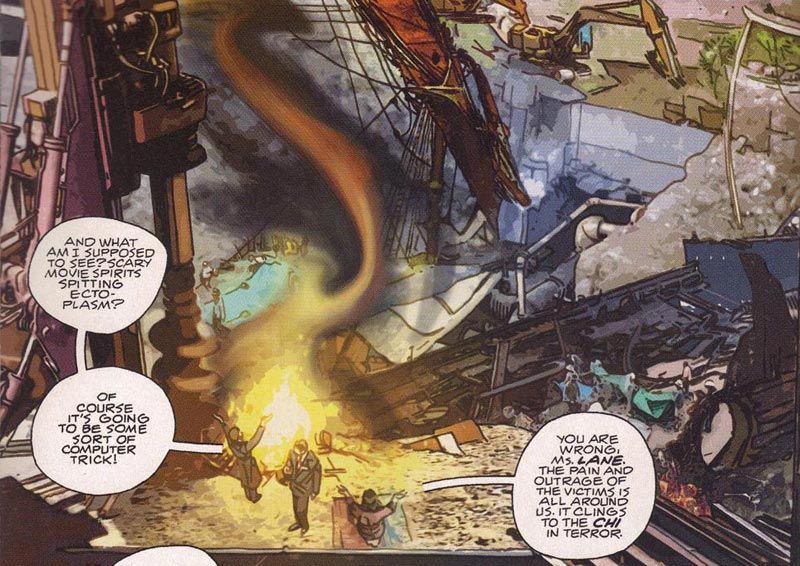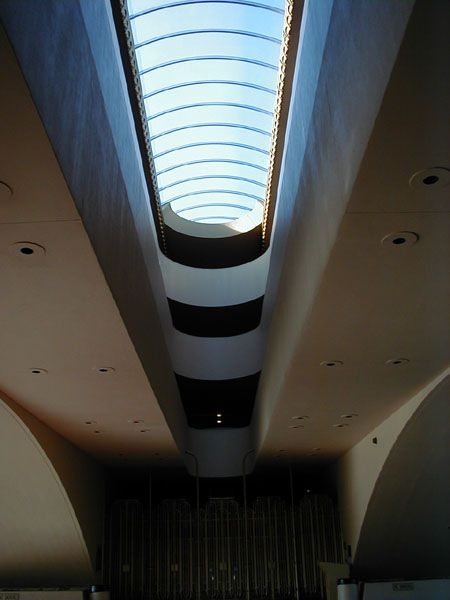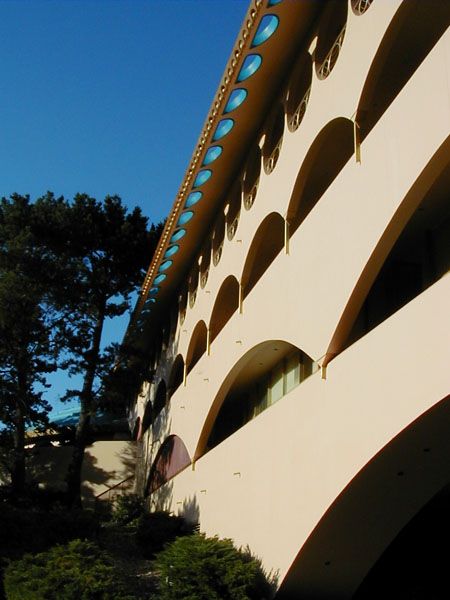In too many superhero books, architecture can be pretty low on the importance level for a lot of comic book creators. Naturally it depends a lot on the interests of the specific writer or artist, and once in a while, the environment looms large and becomes an intrinsic part of the story. More than context, a well-crafted architecture can become another character in the story, lending substance and weight to the superheroes world.
Yesterday my friend Dave, from Buffalo, asked why no one has ever used Frank Lloyd Wright architecture as a model for Metropolis. I couldn’t agree more, this is an architect who was massively ahead of this time, yet was able to embrace a kind of clean, timeless classicism. About a decade ago, my family, visiting from London, decided that a road trip to Niagara Falls would be fun. I’ve seen National Lampoon Vacation, so I should’ve known that a family road trip would be surreal. Luckily there was a bright spots when we took a slight detour to look at the early architecture of Frank Lloyd Wright. I was surprised at how many of the relatively humble details had worked so well when translated to his later, grander buildings. Frank Lloyd Wright has a talent for balance and harmony which make his works that much more appropriate for the mood and feel of Metropolis.
Dave’s question reminded me of the one comic book I’ve read which did depict Metropolis as the star of the book, with soaring architecture, labyrinthine details, and a definite charactewr which affected the entire story. Strangely it wasn’t a Superman comic book, but Rick Veitch and Tommy Lee Edwards “The Question” mini-series published by DC in 2005. Ostensibly it stands as a story about The Question (Vic Sage) visiting his old school chum of Lois Lane, but at heart it is a Question / Metropolis team-up, with Metropolis as the star.
At the time I wasn’t very familiar with The Question, but I liked the idea of him enough to check this book out. I was immediately captivated by Tommy Lee Edwards atmospheric art. Veitch’s wild horror-tinged story is a pastiche of actual concepts (feng-shui, modern architecture, city planning, lei lines, chi, pneumatic tubes, organized crime, hired killers), all thrown together to create a rather chilling concept for a poor, confused Question to combat. His confusion and fear provide an engaging counterpoint to Lex Luthor’s elegant architectural scheme. The city overall is an important subject in the story, but Luthor’s towering building is the omnipresent element, towering over the city, affecting the inhabitants, collecting the energies as the story builds to a climactic conclusion.
When I lived in San Francisco, my parents dragged me to go see the Marin Civic Center. I wasn't interested until I learned that it had been used in Gattaca, and when I got there, I was amazed that a building from the ‘60’s could so effectively embrace the future. It really was visionary, and a very appropriate last building for the architect to leave as his legacy. It just makes sense to use it as representative of a utopian future. Frank Lloyd’s work isn't simply visionary, it is an aspirational sort of futuristic design, very optimistic and harmonious. A city like Metropolis is meant to be beautiful and bright, a bustling hive of big-city activity. Everything Gotham isn't really…
Batman’s Gotham is an odd sort of a city, spoken of often, but never clearly depicted. Rarely explained in any detail outside of a general gothic-infused darkness, this vague gloom only serves to enhance the atmosphere of mysterious danger. In fact, it is this vague, non-description that truly defines Gotham, and there probably isn’t one single architect or school of architecture that should ever define Gotham. The only book where a building in Gotham is completely and explicitly described is Dave McKean and Grant Morrison’s Arkham Asylum. But even here the building is deeply mysterious, hidden in shadow, too dark and dirty to ever be known, understood, or handled. Appropriately, it just isn’t possible for us to truly know it. Victorian eclectism at it’s worst, it is the perfect embodiment of Gotham’s non-architecture.
A comic book where the city is the absolute star would have to be Mister X. There you have a modern, austere city which is somehow driving the inhabitants to suicide. The original architect (Mister X) lurks in the shadows, using secret passages and allies to try to decipher out who altered his original plans, how, and why they did it. Meanwhile he never sleeps, afraid of the horrific nightmares he will have, experimenting with increasingly dangerous drugs to keep him awake throughout his mission. Though it is never explained why he is this way, one disturbing Peter Milligan and Brett Ewins story hints at a history of abuse, ignoring the wider story of the city for one single, nightmarish issue. The whole Mister X premise is a weird, rambling sort of an idea which could never happen nowadays. Originally, the idea for the story (and the incredibly engaging teaser ad campaign) were created by designer Dean Motter, but once he had the comic, he wasn't really sure what to do with it. In came a series of writers and artists, wildly diverse, who did all sorts of things within the sandbox he had created. It was oddly powerful stuff with the city always at the forefront in some shape or form.
Another of my favorite dirty, gritty cities is Hell’s Kitchen, as depicted by David Mazzucchelli and Frank Miller in their ‘80’s run on Daredevil. With his altered senses, the way artist’s choose to depict Daredevil’s hometown is always fascinating on any decent run of the comic book. In this instance it was boldly drawn, with Miller’s early, slighty clunky attempts at hard-hitting, urban cultural commentary of a sort. While Miller creates the space for these stories, it is Mazzucchelli who brings the detail and substance to the city, depicting this area of New York as believable and realistic.
I’m grateful Dave reminded me of Frank Lloyd Wright and connected the dots to Metropolis. I think a lot of us have our favorite buildings and cities from comic books, and it’s important to acknowledge the writers who acknowledge this context and the artists who take the time to depict it.




